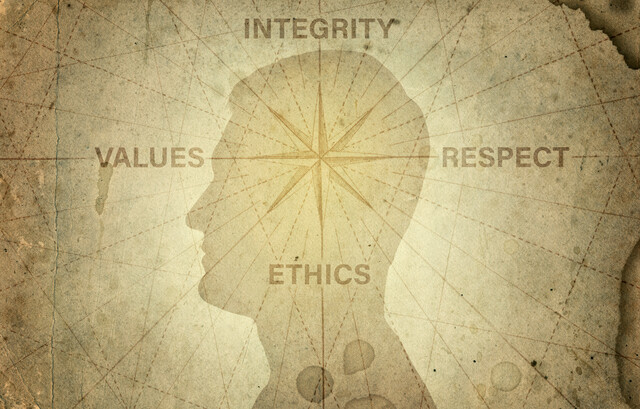There is often several methods for doing something. Traditional methods tend to be the version that everyone learns when they are first taught how to do something, regardless of the field, industry, or interest. It's a way that is largely universal because of how long it has been the standard method of doing that particular thing. However, there are often newer ways that take the traditional and turn it on its ear. Such new versions can be deemed innovative, or unorthodox, or just plain different--but that doesn't necessarily mean that they are bad. In the business world, newer approaches to old practices are often encouraged as a means of keeping up with changing industries and the economy. As a part of the business world, procurement management has a few new and unconventional approaches of its own.
This article will look at one of those new approaches, strategic sourcing, and how it can be used to improve procurement management. Topics will include its benefits, how it is different from traditional approaches, and the strategic sourcing process. Keep in mind that there is no requirement stating a procurement team must use strategic sourcing over traditional methods, as there are going to be some who work just fine with the traditional. Its usage is entirely up to you.
What is Strategic Sourcing?
As mentioned, strategic sourcing is an approach in procurement and supply chain management that differs from traditional practices. It's a more formalized and streamlined method for an organization or team to gather relevant information that can be used to their benefit. While most procurement teams tend to do this, it's usually not as frequent or consistent as it is through strategic sourcing. The approach is much more analytical than what is normally used in procurement, looking at past purchasing practices and optimizing them for their full value. There's an emphasis on considering the entire life-cycle of an item or service and going beyond its initial purchase price and purpose.
Since strategic sourcing is considered to be a non-traditional procurement approach, it's of course going to be different that the traditional purchasing and procurement approaches discussed in this course. They all get the same job done with the same intentions, it's just done in a different way. The question is, how is each way different? To refresh your memory:
-
Procurement: A broad series of actions to obtain goods and services to be used by a business for things like manufacturing and basic operations. It includes purchasing, contracting, supplier relations, negotiation, and management practices. Basically, the entire supply chain all in one continuous process.
-
Purchasing: The transactional action of obtaining something in exchange for payment. It can be standalone or as part of another process, including procurement and strategic sourcing.
Both involve fewer actions than strategic sourcing, although purchasing occurs throughout. It could be argued that strategic sourcing is a much more advanced version of traditional procurement that happens to be highly organized in its activities. Excluding standard purchasing--which is present in every procurement method--the primary differences between traditional procurement and strategic sourcing lie in factors such as cost, value, and relationships.
-
Cost--Both methods approach aspects of cost differently. Traditional procurement addresses cost at the moment of purchase for a product or service while strategic sourcing looks at the total cost related to that same product or service. It's what's on the price tag versus the addition of shipping and handling, tax, storage, etc. for the same thing.
-
Value--Not necessarily the cost of things, but the quality of them. Things that are of a lower quality tend to become more expensive over time due to things like maintenance and life-span than their higher quality counterparts. It's not necessarily something that is taken into account with procurement, but strategic sourcing factors it in determining if a higher price tag is really worth it in the long run.
-
Relationships--It's not just the products and services that have a price, but the suppliers who provide them. Procurement management stresses building a relationship with suppliers and actively collaborating with them. The process of building those relationships also involves different approaches in procurement and strategic sourcing. For procurement, the focus is on getting quotes from multiple options and choosing the best one of the bunch. It's not necessarily going to be the best bang for your buck, so to speak, and can be an unnecessarily difficult and stressful relationship. With strategic sourcing, it's evaluating your options for those that are going to be the most stable and beneficial in the long term and then contracting with them. By comparison, it's working to avoid such complications in an effort to get what you need.
As with traditional procurement practices, there's a process for strategic sourcing that acts as a guide for the procurement team. It's a series of eight steps designed to help meet the team's goals with the most benefits and the least amount of waste. Unlike the traditional procurement process, the process for strategic sourcing needs to be followed a little more closely to get the intended results. Any room for adjustments is to accommodate the resources, goals, and other such elements being applied to it. Again, it involves a bit more work to get the better outcome. The basis of the process includes, in order, the following steps:
-
Identify Target Spend Areas--Nothing can begin without analysis of the areas of spending that need to be optimized. This means information about what needs to be purchased, where or from who it will be purchased, what it is needed for, and its overall cost, amongst others. Multiple data points need to be analyzed, so this first step can take some time if there's a lot of information to go through. This shouldn't just include current practices, but past ones as well; when using the process for the first time, it may be necessary to go as far back a records indicate or up to around ten years. Keep in mind that there is no guarantee that a clear solution to existing procurement issues or an objective will come out every time, and that this is still just the first step.
-
Create Sourcing Team--The information that has been analyzed can be then given to a sourcing team. They are the ones who apply the information into a feasible plan of action through the data's interpretation. However, this team first needs to be created. Most simply assign existing members of the procurement staff to the sourcing team and rotate members with each new use of the process. Those selected should be able to understand the information being given to them, know the existing procurement practices being used, and be willing to make the necessary decisions required of them. As there may be software and programs used in the data analysis, they should also be able to use and understand any technology being used.
-
Develop A Team Strategy--At step three, the sourcing team goes to work and begins to develop an applicable strategy in line with the group's goals and objectives. Most of the goals a procurement team selects for their efforts remain the same with each procurement, so a mission statement detailing those goals is often appropriate. The strategy that the sourcing team creates often involves information about how they want to achieve their intended goals and the specific actions that will be taken to do that. The capabilities of current suppliers and the requirements that need to be followed when selecting future suppliers are usually laid out as well. Any means of tracking progress in the strategy and the means of communicating the strategy's progress with the procurement team is also decided upon during this stage by the sourcing team.
-
Collect Market Information--The market is always changing, so any information regarding its current state cannot necessarily be applied to the sourcing team's strategy. The information used to create that strategy is based upon things that have already happened and is unlikely to change; it's a factor that remains constant. Information regarding the market needs to be fresh each time and is on the short-list of things the process flexibly accommodates. This often includes looking at the suppliers that are currently operating in the market. Requests for Information (RFIs) can be obtained after collecting preliminary information about industry leaders and major suppliers via interviews. An RFI should seek data regarding products, programs, financial stability, organization, location(s), practices, and references. Think of it like a hiring process, where potential candidates progress through a series of stages and the choices are gradually narrowed down.
-
Supplier Portfolio(s)--The information obtained through RFIs can then be sorted through and a portfolio on the supplier candidates can be created. This basically organizes the information so it can be evaluated for further consideration. Members of the team will go through each portfolio to identify potential suppliers. Try not to rush through things because of a deadline, as there can be a lot of information to go through and you want to avoid missing anything that could be worrisome. Check the information with public records, reputations in their respective industry, and with the references provided. When candidates have been decided on, a Request for Proposal (RFP)--alternatively a Request for Quote or RFQ--can be sent to them to solicit information on pricing and contracts. An RFP should not be sent to a candidate if there isn't a consensus from the team. Avoid making decisions based on favorites or loyalties to past suppliers so a conflict of interest does not develop.
-
Develop Final Choice--Does the information provided by the candidates via an RFP line up with the strategy created in the process' third step? Review the requirements that have been decided upon for your suppliers and look at the proposals you've received. You're basically comparing the information and determining which one is the closer match. It's not necessarily a checklist with whoever has the most wins, but a measure of who will be able to provide the best value in the long term. Based upon what they have provided and the team's interpretation and evaluation of that information, you then decide upon a final choice. It is that candidate whose bid is accepted and who receives the offer of a contract.
-
Negotiate, Evaluation, Commitment, Agreement--There's a little more work to be done before anyone signs anything. Negotiating is standard of procurement, regardless of what process is being used. Communicating and/or meeting with the selected supplier to discuss the terms of the arrangement is necessary to make sure that everyone is on the same page. It's also acts as an extra final evaluation of their offer, as there may be more information provided at the last minute. Everything that is agreed upon should be documented in writing, with copies being made available to all parties. Literally and figuratively dot every �i' and cross every �t' to make sure that nothing is left out or that there are any loopholes that can cause problems later on. Take your time in working things out. It is possible that things can break down and either party withdraws from the agreement pre-signing. If that happens and a solution cannot be found to get them back on board, you will need to fall back a step or two and select a new option.
-
Managing Supplier Relationship--Once the contract has been signed and everyone begins to do their assigned tasks, the relationship that has been created needs to be maintained. It's surprisingly common for one or both sides to go through the process and then not continue the relationship that they worked so hard for. Managing supplier relationships helps ensure that everyone is doing their agreed upon share of the arrangement. It's how you make sure that what is supposed to be done is actually getting done as it should be. Taking the time to manage these hard-earned supplier relationships also helps keep the strategic sourcing process moving, improving, and working.
























